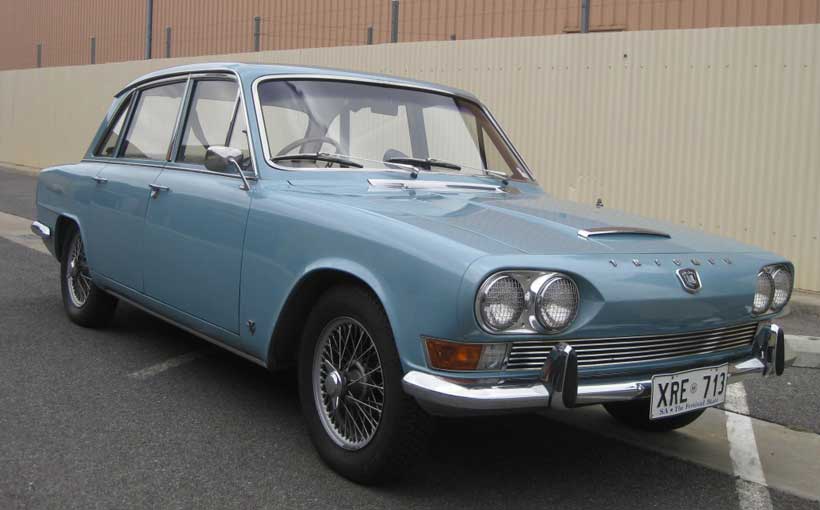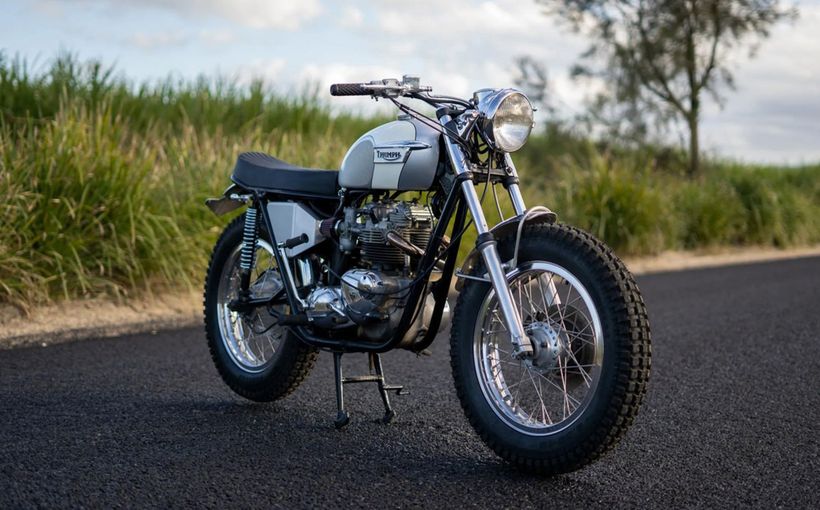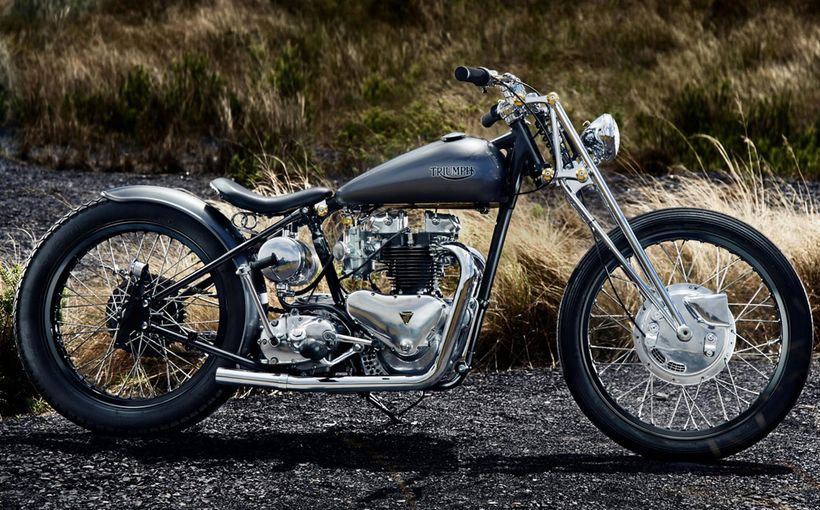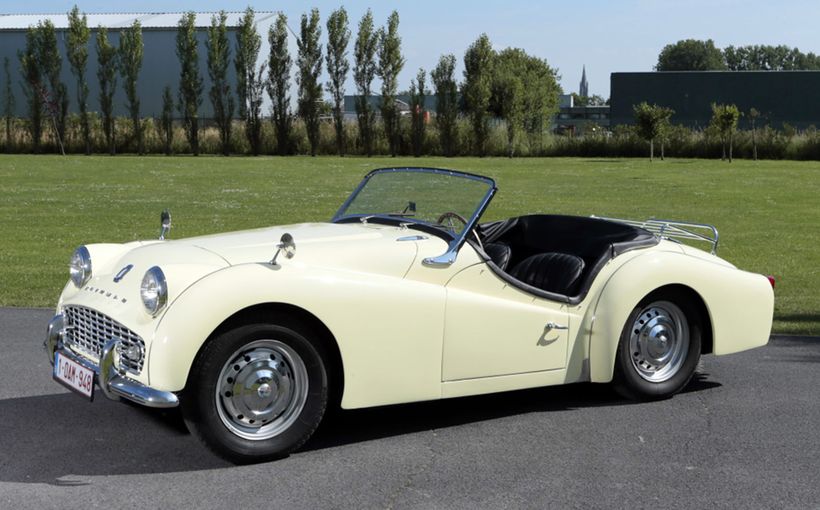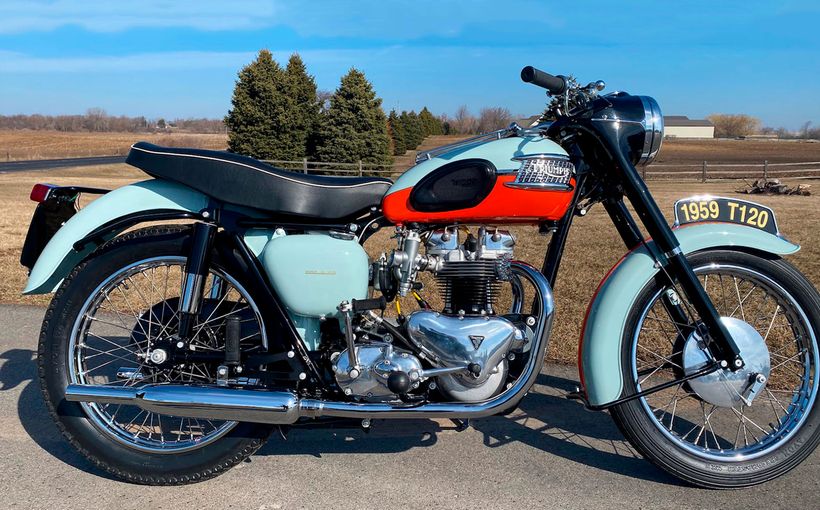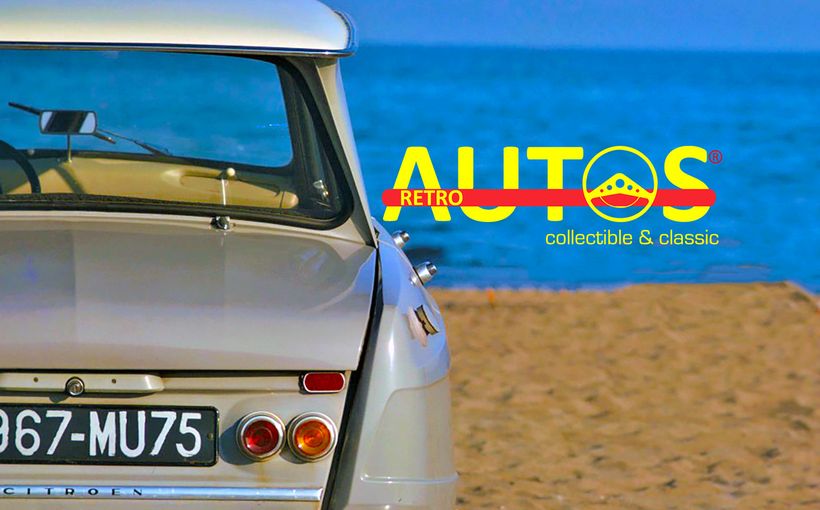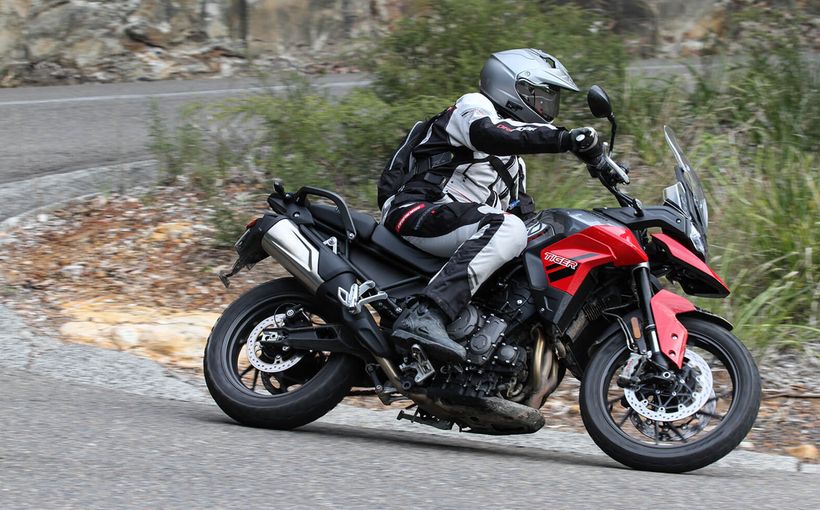1963-78 Triumph 2000/2500: A True Vanguard Better Than Standard

The Triumph 2000 was the answer to the question: If this is the Standard Vanguard, where is the Deluxe version? Standard’s Vanguard replacement not only had to be a much better car but it had to lose the Standard name. Standard in global car markets had long since applied to the cheapest and meanest model.
Although work on the first Vanguard replacement commenced in 1957, the Triumph 2000 went from a sketch in 1961 to its 1963 launch in just over two years. It was one of the most successful rear guard actions in automotive history.

The Standard Naming Maze
Two proud heritages merged at the close of World War II. The Standard company had not only survived two world wars but flourished during both after diverting factory assets to wartime production including several of Britain’s iconic aircraft. Between wars, Standard was known for a mid-range of staid but popular saloons that challenged Austin’s domination of the UK market while defining a niche between Austin and Rover.
The company also supplied chassis and engines to smaller companies including Jensen and the Swallow Sidecar Company (SS).
Triumph meanwhile had moved from bicycles to motor-cycles then enjoyed success as a sporting saloon and sports car manufacturer between the wars. By 1939, the car making side of the Triumph business was in trouble and what was left of it was obliterated by the German bombing of Coventry.
As Sir William Lyons sought to produce his own chassis and engines after World War II as SS evolved into Jaguar, Standard was on the lookout for a sports car arm to replace that business. What was left of Triumph was purchased for little more than the name.
In the early 1950s, the small Eight and Ten saloon range were badged as Standards. For the Triumph badge, there was a unique range of premium saloons and roadsters and a baby Mayflower version, later sharing distinctive “razor-edge” styling. The full-size family car market was covered by a brand new Vanguard Phase I from 1948.

Each brand contained a reference to Standard: Standard on its own or Standard-Triumph or Standard-Vanguard. In export markets, the pace-setting and proud Vanguard badge, its use so carefully negotiated with the Royal Navy after it had described centuries of advance party naval vessels, was weakened by prefixing it with Standard. Any Jaguar-challenging image for Triumph was also undermined by the Standard reference.
For the Vanguard, Standard had developed a new wet-sleeve overhead valve inline four shared with the Ferguson tractor now manufactured in one of Standard’s leftover war time facilities. This engine was also used to give Triumph’s more traditional models a boost.
To confuse matters further, the Vanguard ultimately made the quaint Triumph sedans redundant. By 1954, the Triumph TR2 sports car had become the sole flag bearer for the Triumph badge. Based on an earlier Standard chassis and powered by a hotter version of the Vanguard engine, the TR2 added new value to the Triumph badge after it became an export success.

The first Vanguard was quite advanced for a British car and because it shadowed the Holden in size, toughness and specification, strong Australian sales were important to Standard’s viability. Its big 2.1-litre four matched the first Holden’s 2.2-litre six in output and if Redex Round Australia trials were any indicator, its separate chassis construction was even more rugged. The Phase II's separate boot brought it into line with modern three-box styling.
The first unitary-construction Vanguard Phase III arrived late in 1955 but was left to soldier into the 1960s. A two-stage Michelotti facelift gave it a reprieve late in 1958. More dignified in looks, the 1958-59 series gained bigger front and rear screens and resembled a mid-1950s Chrysler at the front. In 1960, it was badged as the Vignale after vertical “matchbox” tail lights were tacked over the previous round tail light sheet metal. Reflecting the swing towards Europe, such token changes could do little to revive sales against fresher and more powerful opposition.

Standard’s Last Stand
The Vignale facelift was only intended as a short term freshen-up before it had to last five years! Its replacement was already underway in 1957 but priorities changed. In the aftermath of the Suez oil crisis which led to the Mini and a wide range of clever new British small cars, replacing the small Standard saloons had become far more pressing than a new Vanguard.
Michelotti was again responsible for the new small car, marketed as the Triumph Herald. It also re-defined expectations for a Vanguard replacement as it marked the point when Standard first conceded that Triumph had a better image than Standard.
Even if the new Herald’s basic swing axle independent rear suspension, Italian styling and an entire front body section that hinged forward were new, it was aimed squarely at budget buyers, especially if they did their own servicing.
The Triumph Herald was a big success in the UK. Because Standard could not press its own panels, the Herald marked a return to a full chassis. Standard could then re-deploy its own workforce to build more of the Herald while adding easily changed bolt-on panels from an outside supplier. Later Spitfire roadster and Vitesse models capped with different panels were a cheap way to boost volumes and profitability.
The Herald had been funded by the sale of Standard’s Ferguson tractor interests. Its role was to then generate funds for the Vanguard replacement.
This sequence didn’t allow for a credit squeeze throughout the British Commonwealth in 1960-61 that decimated vital Herald and TR3A sales and brought sales of the dated Vanguard to a standstill, no more so than in Australia.
In a desperate and final move to stay alive, several dead-end options for a new Vanguard were explored then abandoned, costing valuable time. The initial, but dated, internal Vanguard Phase IV proposal had to be dropped. Negotiations for Standard and Rover to share a new model followed. These talks not only failed but confirmed that Triumph would soon be competing with Rover for the same buyer.

Because the abandoned Vanguard replacement marked a return to a full chassis but with independent rear suspension and rear transaxle, clothing it with suitably expanded bolt-on Triumph Herald body panels made commercial sense. Except the once trend-setting Herald styling had dated quickly in the era of annual facelifts. It was also designed and marketed as a clever but budget economy car and didn’t have the presence for a more prestigious family model.
In tougher export markets like Australia, things broke or rattled apart in the Herald that shouldn’t have. The Herald had also eroded both Standard’s and Triumph’s export reputation. Any direct connection would have been disastrous for a new model.
Michelotti was briefed to prepare a superficial makeover of the expanded Herald panels to avoid any such link. Herald proportions and hard points ensured that it ended-up looking like the Farina Austin A110 Westminster and the Japanese Isuzu Bellel. A clichéd Farina lookalike that arrived after everyone else could never be a serious advance over the Vanguard Vignale.
At this point, Standard was on the ropes financially and faced certain closure. If a cashed-up Leyland hadn’t arrived in May 1961, ready to fund yet another Vanguard replacement and initial development for the next Herald, it would have been over by the end of 1961.

Leyland, the largest single truck and bus maker in the world at the time, had done well during the credit squeeze by selling outside the British Commonwealth. Strong demand for public utility vehicles in the UK, Australia, Hong Kong and parts of Africa was also independent of restrictions on private spending.
Standard was snapped up for no other reason than it was an all British company, available, and ripe for improvement. Initially, it was an astute decision and delivered on expectations before other failing British companies were brought into the fold.
Initial Michelotti sketches for the next Herald, also prepared around this time, promised to move the bar for a small car. Senior management was so impressed with this work that by the end of the European spring in 1961, Michelotti was told to work full steam ahead on adapting this work for the Vanguard replacement. The tight time frame seemed to harness all the abandoned earlier plans, which in one way or another, helped shape the final result.

A New Six Was Born
As Standard started its death throes, it managed to present the new inline six from its abandoned Vanguard replacement in the final versions of the Vignale Vanguard from 1960. Based on the Herald’s four cylinder engine plus two cylinders, it was a light (20kg less than the old Fergie/Vanguard four), smooth and relatively efficient design for a simple pushrod engine.
Despite its smaller 1998cc capacity compared to the 2088cc four, it transformed refinement and performance. It also delivered 85bhp/63kW compared to Holden’s 75bhp/56kW from 2.3-litres, with plenty more in reserve as it breathed well with individually machined ports, matched manifolding and double valve springs.
It reflected what BMC Australia did in transforming the Austin A60 Cambridge four into the Austin Freeway six in an equally desperate measure. The Vanguard was a better starting point.
The Vanguard 6 took until March 1961 to reach Australia and on local fuel boosted output from the four’s 68bhp/51kW to 80bhp/60kW, still enough to beat Holden. It then took until May 1962 for AMI (Standard’s local arm had already evolved into the much broader Australian Motor Industries operation to survive) to offer the no-cost four speed manual option. For its time, it was an outstanding four on the floor transmission with well-chosen ratios, developed for the Triumph sports cars.
Although the local Vanguard 6 still had a front bench seat, its new twin carb six, four speed manual, heater, windscreen washers, reversing lights and full instruments had already moved the Vanguard away from its agricultural origins by 1962. For the price of a Holden, it was good value except the EJ Holden and its new US rivals were now a generation or two ahead in looks.
The Vanguard’s front bench seat and the offer of a gear lever extension to allow the floor shift to be accessed above the seat, highlighted the T-intersection Standard was facing: Sports sedan or budget family car?
Sales of this desirable final Vanguard might have been slow but it was a vital step in reviving local credibility which the flawed Triumph Herald and ageing Vanguard 4 had squandered.
More Vignale changes were made in 1963 as a curtain raiser for its replacement. Subtle tweaks to the side strip, grille, deleted bonnet trim and wider bumper over rider placement subtly previewed its imminent replacement. When the Vanguard 6 was finally withdrawn locally in June 1964, it had left behind a sweet powertrain, proven and respected in a local sedan, wagon and hard-working ute.

Project Barb
In recognition of its growing sporty character and the ambiguous Standard name, the now imminent Standard/Leyland Vanguard replacement was known internally as the Triumph Barb project. It was to be offered as a six in 1.6-litre and 2.0-litre capacities. Why?
The big challenge in 1961 was defining exactly what it had to be. The original Vanguard notion (an early Mitsubishi Magna by nature if not name) of a more frugal and capable 2.0/2.1-litre four challenging and matching the 2.2-litre Holden/Vauxhall/Zephyr sixes was out of date. The tiny 2-litre displacement of the Vanguard 6 was no help even if its extra refinement and performance were competitive.
By 1960, British and export markets were dividing into 1.5-1.6-litre family fours and bigger 2.5-3.0-litre sixes, and none more so than in Australia and South Africa as bigger-engined Falcons and Valiants arrived.
BMC faced the same dilemma defining the Austin 1800. The Austin 1800 revived the original Vanguard’s big four banger market positioning which worked in Australia. UK buyers saw it as too big for a 1.6-litre alternative but too short on prestige, looks and power to challenge the bigger British family sixes.
Two factors then forced Standard’s hand. The result was a groundbreaking solution that would establish a new prestige compact six-cylinder entry class that thrives to this day at 3-series BMW level.
The new Triumph would later define the first BMW 525, compact Mercedes-Benz, even the first Opel Commodore. It also influenced the Peugeot 504 (suspension, size and styling) and the Volvo 144 (packaging and styling), both key rivals in export markets. Later Japanese models such as the Nissan Skyline and Toyota Cressida would have a clear blueprint to follow.
Parameters for Australia’s own first Commodore were remarkably close to those established by the new Triumph. So what clinched it?

The Michelotti styling was brilliant, straight out of the box. Standard’s first design ever that levelled the front and rear guards with the bonnet and boot lid, Michelotti resisted placing the headlights in the grille. He had reserved such a look for a sleeker convertible version (which later appeared as the Stag).
Its Rover 2000 competition evolved from Rover’s gas turbine production concept inspired by the Citroen DS19. Rover effectively cut off its sloping nose and capped it with a full width grille filled with four headlights that was more modern than the Triumph. Yet the centre section looked solid and conservative Rover despite its modern rounded sides. It was also late 1950s from the rear.
The Austin 1800 was sent to PininFarina to lose its resemblance to an upsized Morris 1100, a process that Standard rejected after Michelotti was asked to do the same with the Triumph Herald-based Vanguard replacement. Although Farina’s front and rear sections for the 1800 were up to the minute, the fixed bodyside depth and scuttle height belonged to another era.
Much of Europe and especially the UK with its brand new motorway system, were ready for a sleek, ground-hugging new look in a sedan. Michelotti gave the new Triumph proposal a British bulldog look at the front. The separate rounded top section with its recessed quad headlights recalled the rounded noses of popular early Vanguards for an imposing presence beyond its compact size.
This original style was more distinctive (also rarer today and potentially more valuable) than the convertible/Stag front styling applied to later versions.
The three deep windows on each side and low waistline gave it a modern, airy look that still looked strong with its triangulated pillars. The rear section was particularly adventurous with a sedan interpretation of Dr Kamm’s new truncated and recessed GT tail designs.
The short tail, long bonnet proportions were soon validated by none other than the Mustang. A wheelbase of 106ins/2692mm was longer than a Holden’s and matched that of the AP5 Valiant yet its length was a full 10ins/254mm shorter, highlighting its clever use of space, extra balance and short overhangs. It was a stand-apart design that defined a new look at exactly the point when global markets were looking beyond the US for something different.

Standard under Leyland funding could re-engineer it as an exceptionally strong unitary body incorporating lessons learnt from the rugged Vanguard Phase III. Its narrow track was the only compromise but its contemporaries were no better. At least it allowed for wider wheels.
The second deciding factor was the build cost of the 1.6-litre inline six, the same as the 2-litre version. Its loss of power was also not consistent with the image of a sportier Triumph sedan. Yet the 1.6-litre six was put to good use in the much lighter prestige Vitesse sports version of the Triumph Herald. The Vitesse was capped by a top-shelf Michelotti four headlight front which closely resembled the desirable Bertone-designed Gordon-Keeble.
Although the Vitesse was not sold in Australia, its styling and packaging was used for the Australian 12/50 for the same outcome: lifting the perception of the Herald and closing the gap to the new model. The new Michelotti-styled Triumph TR4 which arrived just before the new Triumph 2000 sedan was also a landmark design for its time. Within the nick of time, the Triumph brand had gained some much-needed equity.
From there it became relatively simple to define the Triumph 2000. The strong new unitary body was engineered around front MacPherson struts and sharp rack and pinion steering.

The rear transaxle of earlier Vanguard development cars was dropped. There was no short-term solution to the complexity and the extra noise and vibration. The Herald swing axle alternative was also too crude.
A proper double-jointed semi-trailing arm independent rear suspension was locked-in after BMW had pioneered the concept in its BMW 600 bubble-car in 1957.
Although better designs would surface within a decade to address its toe and camber changes, the Triumph 2000 pioneered its application in a relatively cheap six-cylinder family car. Triumph then used it to give the TR4A IRS/TR5/TR6 sports car range a similar advantage in grip, ride and refinement.
Because CV joint technology was still in its infancy, Triumph used universal joints attached to two-piece half shafts that could vary in length with sliding splines. They were little more than shorter versions of a normal live axle tail shaft.
Keeping these splines lubricated so they could lengthen and shorten throughout the suspension’s travel was critical to prevent them from locking-up under power. If the suspension tried to move against locked-up half-shafts, something had to give way, usually the hubs in the suspension arms.
As front drive prompted a revolution in driveshafts, these Triumph shortfalls could have been soon addressed by modern half shafts with a CV joint at each end. Later British Leyland woes ensured that all Triumphs including the much later Stag would never benefit from this simple upgrade.
For the rushed late 1963 release, the Triumph 2000, like the Austin 1800, was made stronger to cover off any durability issues not exposed in the limited development time. However, attempts to mount the rear suspension arms directly to the body defied this approach.
No amount of development could rein in the noise and vibration issues so the rear section tooling had to be suspended as engineers raced against time to create a separate rear sub-frame. The resulting isolation and absorbency of the rear suspension became a standout feature of the production cars. However, the rear sub-frame mounting points had to be quickly re-engineered directly to the floor pan as the early shackle-type mounts and surrounding floor pan were not strong enough in the very early cars.
As this exceptional platform evolved, the 2-litre engine could be tuned to deliver extra power. Bigger side draught Stromberg carburetors with their own cold air feed, individual long tube inlet manifold and head development boosted power and torque. The four speed manual was now an all-synchro unit.
Although the Triumph 2000 was only a fraction lighter than the Vanguard it replaced (both were around 23cwt/1151kg), it was much quicker, posting a 92mph/148km/h top speed versus the Vanguard 6’s 83mph/134km/h and a standing quarter mile time of 19.6 seconds versus 21.2. The Triumph 2000 also shaved 3.5 seconds from its predecessor’s 0-100km/h time of 17.1 seconds. Its power-assisted front discs/rear drums could not be faulted according to testers.
Combined with the smart new interior which featured a dash that replicated the nose styling with a range of white-faced gauges and wood grain panels recessed like the headlights, the superlatives were soon flowing. The Triumph 2000 had matched the prestige feel and presentation of cars double its price while delivering exceptional fuel economy. Even if it was priced against bigger-engined Fords and Vauxhalls (or Holdens in Australia), it was far more rewarding to drive due in no small measure to the exceptionally high torsional rigidity of the body.
The Rover 2000 released at the same time boasted newer technology than the Triumph yet it was the Triumph that was greater than the sum of its parts. Ironically, it was the Triumph that replicated the large car experience of the Rover 3-litre, not the Rover 2000. This also added extra credibility to the later Triumph 1300 replacement for the Herald which looked like a smaller offshoot of the Triumph 2000, not the other way around.
In just over two years, Leyland and Standard had not only delivered a winner and pulled the company from the brink but developed a new middle-class car for an elite new world of motorway travel. As 1960s local roads improved dramatically, Australia was ripe for the same qualities.

The Australian Triumph 2000/2500 Sedans
By 1964, AMI had covered its bases with new locally-produced Toyotas and local Rambler assembly. With Mercedes-Benz manufacture due to end in 1964, the Triumph 2000’s arrival was a perfectly timed replacement as it offered a similar experience for a fraction of the price at just 1535 pounds/$3070 or about the same as a Chrysler AP5 Valiant Regal. As the EH Premier, XM Falcon Futura and AP5 Valiant Regal redefined local luxury, this boosted acceptance of the Triumph 2000 which appeared to cover the same bases only better in several key areas including cabin feel and equipment, ride and handling, brakes, drivetrain refinement and economy.
October 1963: British release.
January 1964: First British production cars.
March 1964: First AMI delivered cars with local paint and trim. Look for AMI badges behind front wheel arches. Early cars had simple flat but reclining front bucket seats with expanded vinyl, basic ventilation, chrome bumper over riders, black on white instruments in two-tone dash. Innovations included warning lights for low fuel and choke, head light flasher and piano key switchgear. Windscreen washers, ammeter and temperature gauge were standard. Repeater lights on centre door pillars. Local colours shared with other AMI models. Most if not all examples should have the revised rear sub-frame ends with bushes mounted directly to a reinforced floor section which were stronger and easier on bushes compared to early cars which had a shackle arrangement.
August 1964: Automatic transmission optional.
July 1965: British upgrades from October 1964 were applied to local cars. Look for parcel shelf on driver’s side, improved seats, cigarette lighter on front console, roof light switch on dash, revised steering wheel.
October 1965: First version of local MD with standard mechanicals but tweaked head and manifolding, chrome rocker cover and radiator cap, locally-built wire wheels with double-eared knock-offs for a wider track, Dunlop SP41 radials, chrome wire headlight guards, chrome ventilation panel ahead of windscreen, overdrive and final drive lowered from 4.1 to 4.3:1. No cost auto option. Inside, extra dash-top VDO instrument pods housed clock and tacho, centre console-mounted push-button radio, smaller local alloy-spoked woodrim steering wheel, matching gear knob. Top speed boosted to over 160km/h and standing quarter cut to 18.7 seconds. Price increased to 2075pounds/$4150. Around 50 believed sold.
January 1967: British upgrades from October 1966 applied including overdrive option. Look for rubber inserts in bumper over riders, new 2000 rear bumper badge, standard clock on dash, ash trays on doors, revised seats with extra contouring, white on black instruments, heater-controls moved from dash to top of centre console, flow-through eyeball vents on dash and extractor vents above rear screen, electrical system switched from positive to negative earth.
Local release of Triumph TR5 with fuel-injected 2.5-litre version of the Triumph six previewed what was coming. US-spec TR250 with twin carburettor 2.5-litre engine also produced.
July 1968: Second version of local MD series released with triple carburetors for big improvement in performance based on 1967 upgrade. Around 48 examples produced, some with AMI metallic colours as offered on local Ramblers and premium Toyota Crowns. Vinyl roof now optional on all local models.

May 1969: Triumph 2.5 PI assembled locally for new fuel injected market niche at $3850. Based on 1968 Mk I upgrade, look for 2500 badge on rear bumper and 2.5PI badge on bootlid, five spoke Rostyle wheel covers, black vinyl rear pillar trim with PI badge. Second version of Lucas mechanical injection system boosted power to 132bhp/98.5kW but short of TR5’s peakier 150bhp/112kW. Revised engine had a stiffened cylinder block, wider head for better gas flow and head gasket sealing, raised compression ratio, dual timing chain. speed jumped to 111mph/179km/h, standing quarter dropped to 17.1 seconds. Upgraded gearbox bearings, dual tube tail shaft, upgraded Dunlop SP3 radials, thicker front discs, larger brake servo, alternator and quartz halogen high beam lights. Cabin gained new ventilated seat inserts, leather-trimmed steering wheel with drilled alloy spokes but no tacho. Under correct maintenance, it could be reliable except high-pressure fuel pump derived from wiper motor tended to run hot in the boot and fail. Short model life makes this early version rare and desirable. Local MD model now redundant and dropped.
March 1970: Local release of British October 1969 Mk II facelift, code name Innsbruck. front previously reserved for convertible/Stag applied to sedan range. Larger boot with fuel tank moved over rear wheels, rear track increased by almost 2ins/51mm, upgraded brake servo, optional power steering dictated engine mount spacers that lifted power steering away from body frame, 5J X 13 wheel rims, 2.5 PI improvements to engine block and cylinder head applied to 2000, alternator fitted at entry level. New dash with circular gauges, adjustable steering column and revised seats with deep-grained vinyl shared with other AMI models. 2.5 PI version featured black grille with 2500 Injection badge, black trim section between tail lights, vinyl rear pillar trim with PI badge, tachometer, slotted-spoke leather covered sports steering wheel, ventilated seat inserts.
March 1972: Large local-type ADR front head-restraints fitted.
March 1973: Unique AMI Triumph 2500 TC created by adding twin side-draught Strombergs from the 2000 to the 2.5-litre engine and pre-dates British version. Same spec as base 2000 Mk II plus TC badge on rear pillars, generic AMI five-spoke wheel covers with centre Leyland logo.
October 1974: AMI-assembled Leyland Triumph 2000 and upgraded 2500 TC brought into line with May 1974 UK upgrade. Look for raised suspension height, Stag-style instruments, smaller front head restraints, plastic four bar Stag-style grille, rubber bumper inserts, multi-spoke wheelcovers. 2500 TC continues with Stromberg carburetors, 2.5 PI rebadged as 2500 PI.
June 1975: Local stocks of 2500 PI cleared.
Mid-1976: AMI assembly ends. Imported Triumph 2500 TC with ADR27a emissions engine with long runner inlet manifold and side draught SU HF6 carburettors based on March 1975 UK upgrade. Slimmer intake plenum chamber fitted to create space for longer manifold.
December 1976: Triumph 2000 withdrawn.
May 1977: Triumph Mk II production ends in UK. Triumph replacement is dropped under Leyland internal politics in favour of single Rover model so new Triumph-developed overhead cam six was instead fitted to Rover SD1 to create Rover 2300/2600 replacement not sold in Australia.

June 1977: Carryover stocks of imported 2500S based on May 1975 UK-spec join 2500 TC in Australia. Luxury 2500S spec features black vinyl rear pillar trim with S badge, Stag-style side stripes and colour range, plush cloth trim, 14 inch Stag-style alloy wheels, standard power steering, front anti-roll bar combined with softer front springs. Overdrive standard on manual cars. Despite its ageing and familiar presentation, it was still rated as good and considered outstanding value at $9595, the same price as Volvo 244DL, Peugeot 504 and Alfetta Sedan.
Local stocks of imported Triumph 2500 TC and 2500S share same ADR27a emissions engine with long runner inlet manifold and side draught SU HF6 carburettors with some loss of performance before both were withdrawn in June 1978.

The Triumph Legacy
It was unthinkable after this bold new Triumph defined the segment and sold 324,652 examples (the 2.5 PI Mk I and 2500S Mk II were the rarest sedans with less than 10,000 each globally), British Leyland would sink the model without trace. As a result, the Rover SD1 was as much a Triumph in its structure and six cylinder engines.
The argument was that the Rover 3500 was close enough to be the same car as a Triumph 2500. This of course wasn’t true as the Triumph was a standalone compact six and the Rover had to also be a replacement for the large Rover P5B V8.
Neither company would have tolerated the SD1’s live rear axle and rear drum brake combination and its many poor-quality fittings for these segments in 1977. It was doomed to fail well short of the 1963-1978 model life of the Triumph and Rover models it replaced. Once Leyland fitted the former BLMC Marina four-cylinder engines to the Rover SD1, both Triumph’s sports sedan and Rover’s upper-crust positioning were casualties.
The Triumph 2000 and the Rover P6 had already exerted a major influence on the Australian market, directly and indirectly. Even if neither were big enough to meet growing baby-boomer family needs in the late 1960s, they still sold well enough for most Australians to experience what was missing in local cars.
Closely followed by similar models from Alfa Romeo, Peugeot and Volvo, both the Triumph and Rover demonstrated that family cars should be as nice to drive as small ones. By 1976, the local industry could not ignore this any longer.
Back in Europe, the Triumph 2000 ultimately forced Ford and General Motors to totally re-think their six cylinder family cars. The result was the Ford Granada and the later Opel Commodore/Vauxhall Carlton range. By 1976, such European models were already re-defining the priorities of Ford and Holden’s existing ranges. Both then shaped their replacements to such an extent that an Opel became Holden’s mainstream model and the XD Falcon shadowed Granada styling. The XE Falcon was then directly influenced by the Rover SD1 in style and rear suspension.

The spec sheets of later Nissan Skyline or Toyota Cressida imports could have belonged to a Triumph. The ultimate local expression of the Triumph 2000 (and the small BMW sixes that followed) was seen in the hugely popular VT Commodore, another Triumph-sized Opel model expanded to meet Aussie needs.
The VT’s steering, front and rear suspension designs at base level for the first time read the same as the Triumph in 1997. And even if the VT’s rear suspension had yet to benefit from new camber and toe control measures not available to the 1963 Triumph 2000, it offered new ride, grip and refinement levels at an unprecedented price, just like the Triumph.
Protect your Triumph. Call Shannons Insurance on 13 46 46 to get a quote today.

